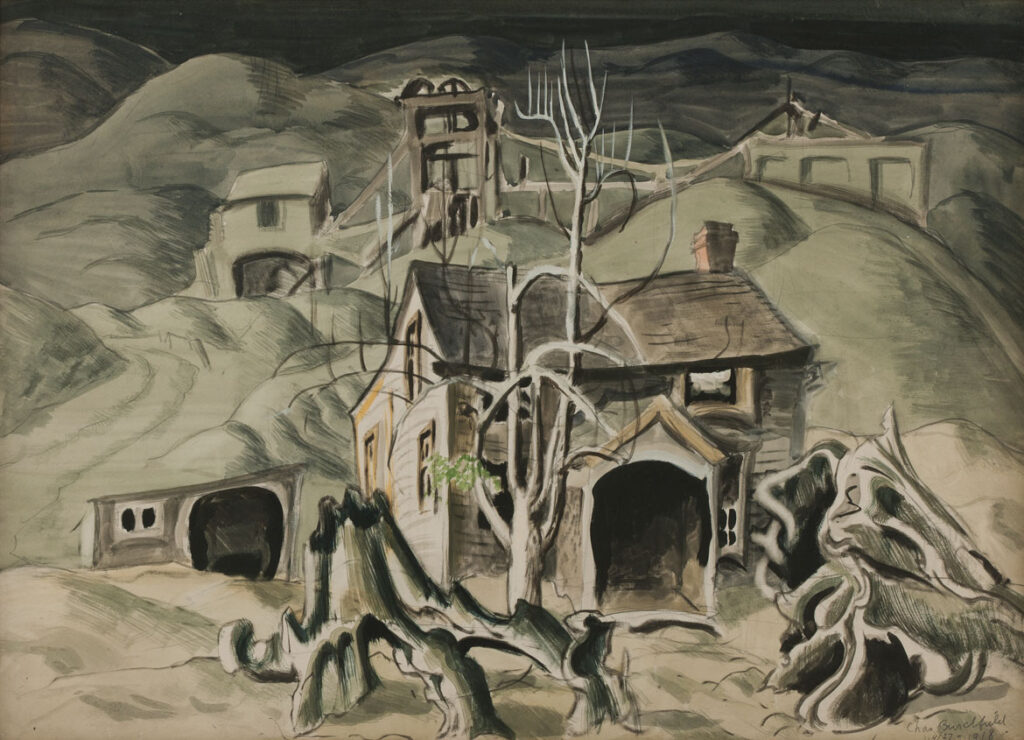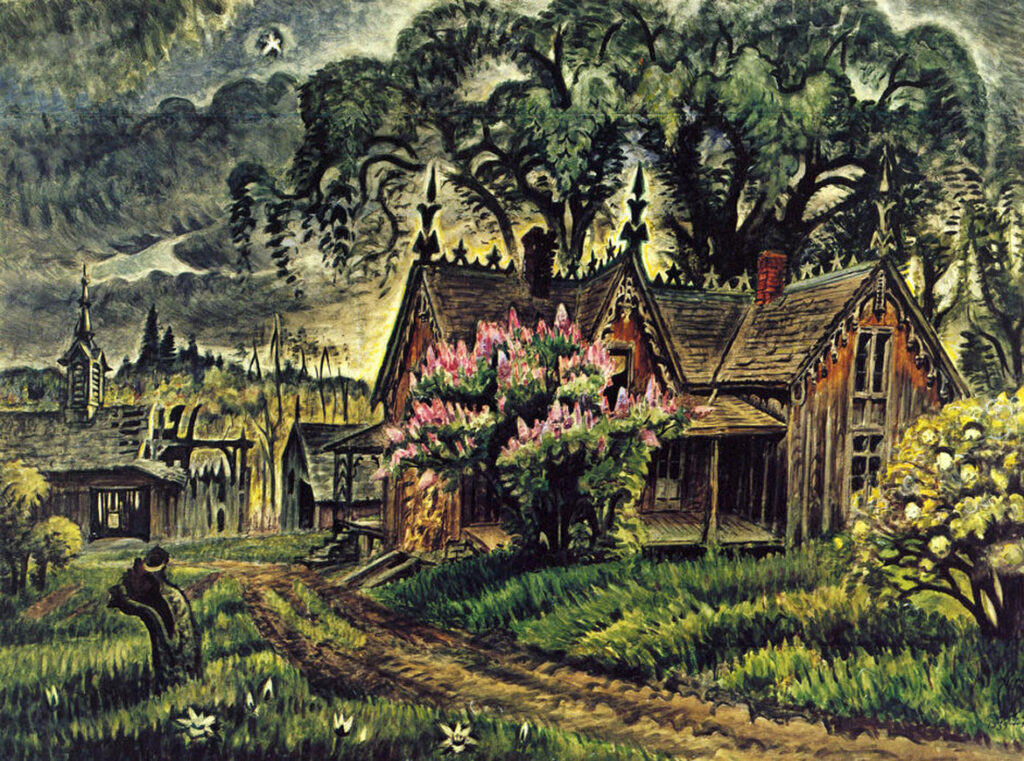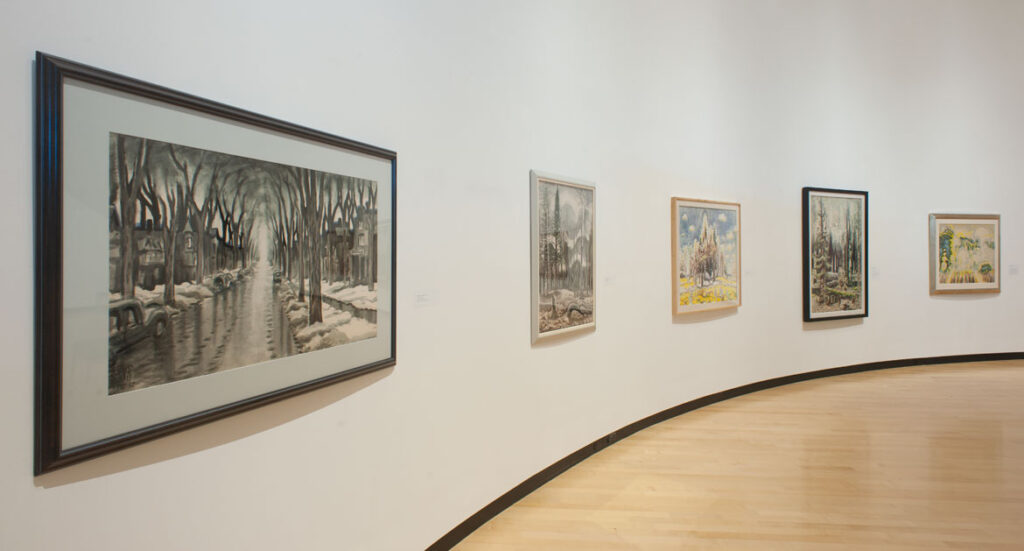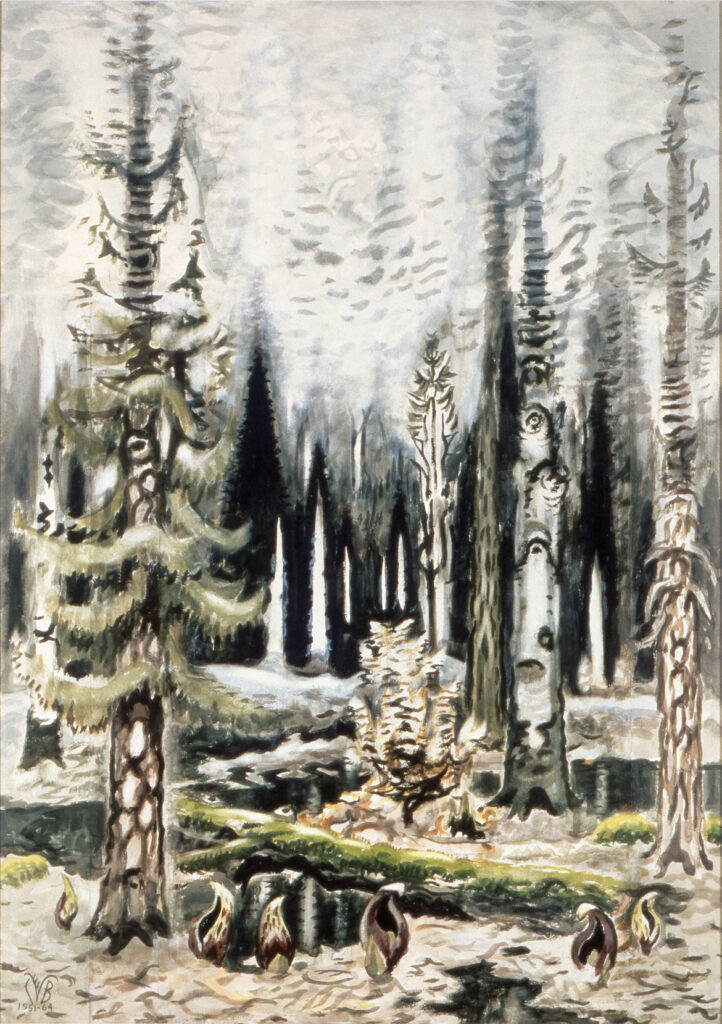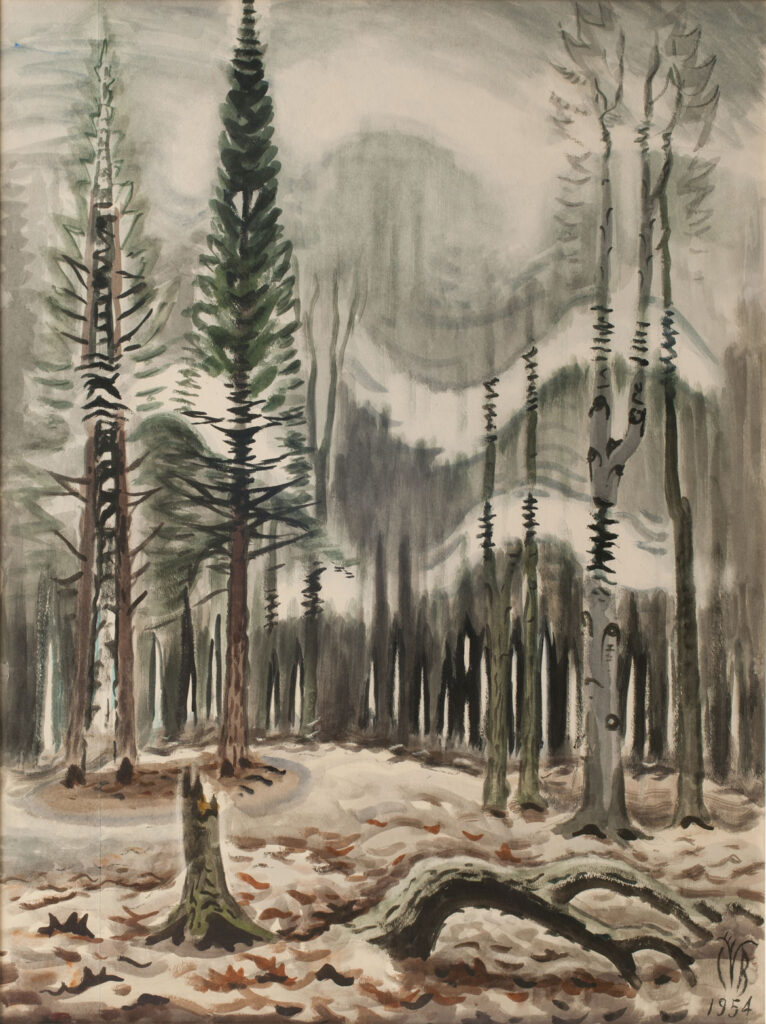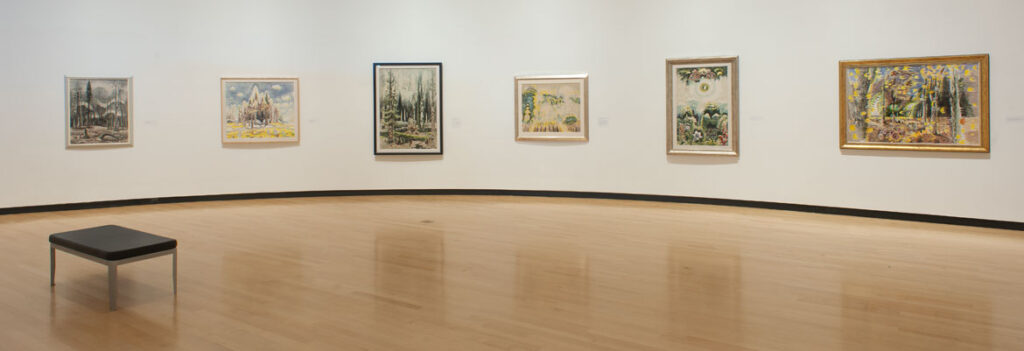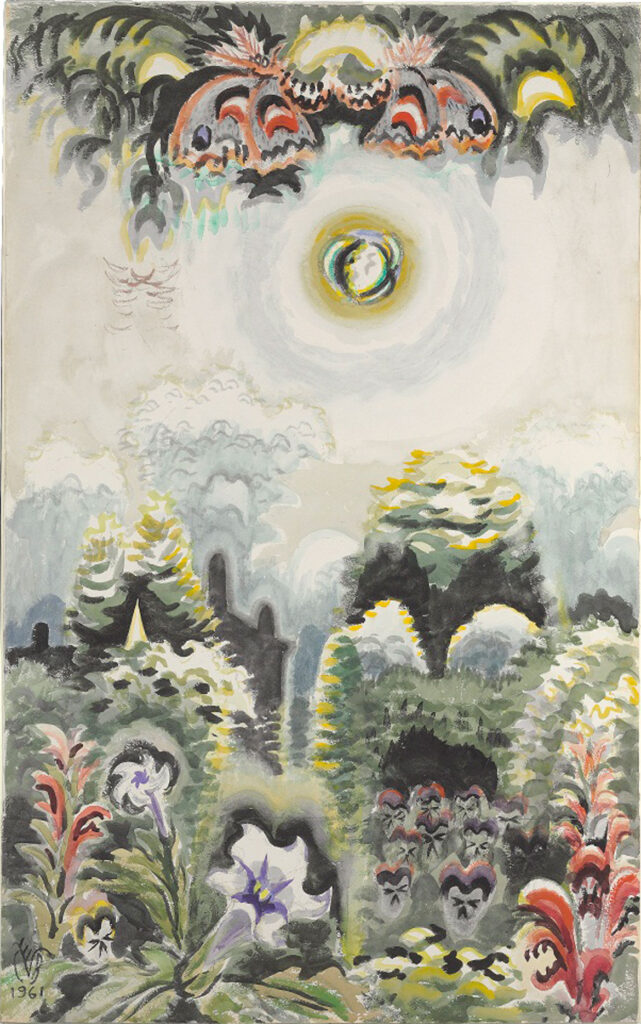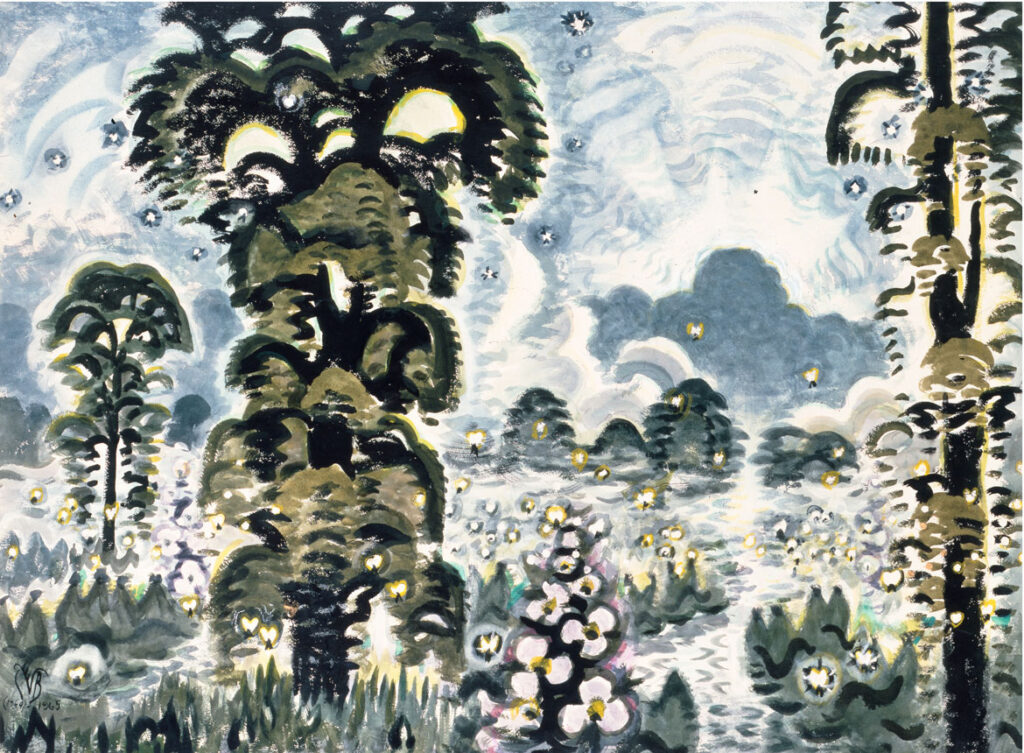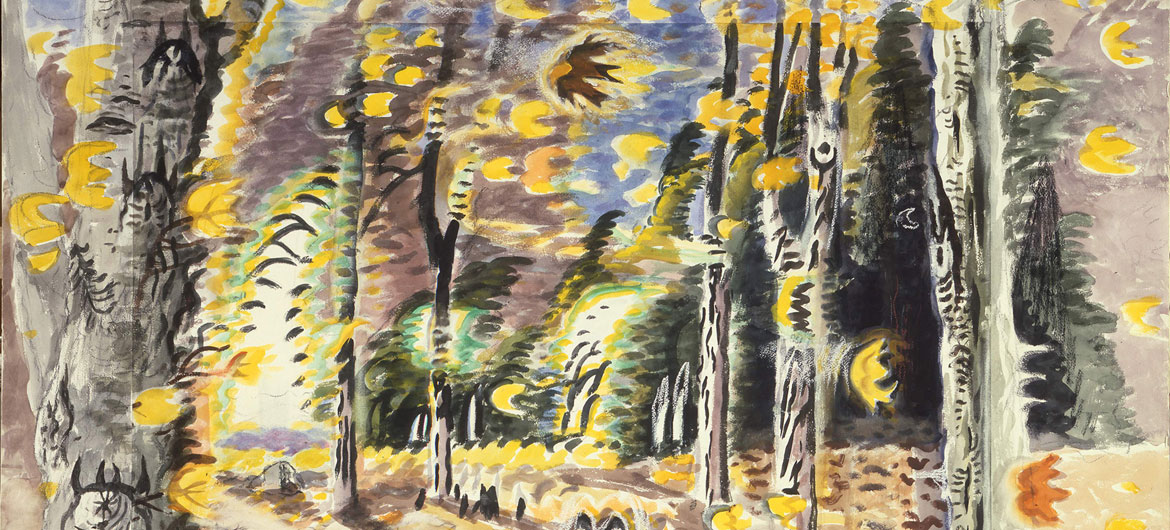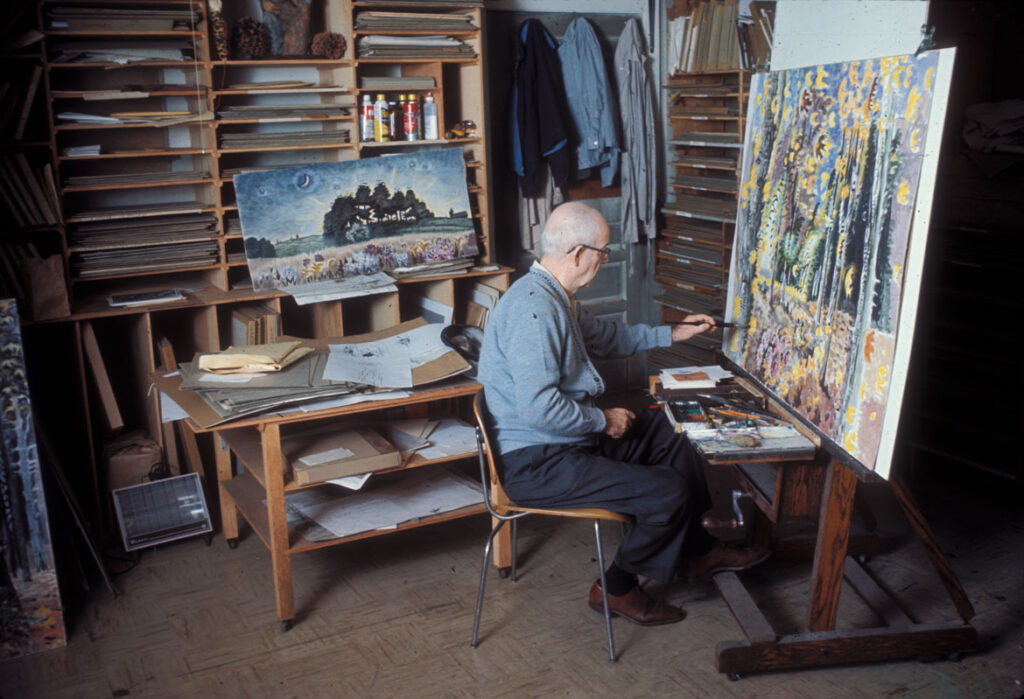“I long for the old forgotten moods,” the painter Charles Burchfield once wrote, “for endless summer days spent in the Ohio hills … for the old burning optimism—for the joy of God’s newly created early … for the old homely interest in common objects.”
His artistic career is surveyed in “Charles E. Burchefield: A Lifetime of Themes” at the Burchfield Penny Art Center in Buffalo, New York, from Dec. 10, 2021, to May 1, 2022.
Burchfield was born in Ashtabula, Ohio, on April 9, 1893, and grew up in Salem, Ohio. He served in the Army at the end of the First World War, assigned to a camouflage unit. In 1921, he moved to the Buffalo area, designing wallpaper before he devoted himself full-time to art in the summer of 1929.
His early paintings from the 1910s can be loose and lyrical renditions of landscapes. “In 1917 I would write out, as I was working on a picture, I would write out what I felt about the subject and write it on the back of the watercolor,” Burchfield said when he was interviewed at his home in West Seneca, New York, in 1959 for the Smithsonian’s Archives Of American Art. He recounted an example: “Crabbed old age sits in front of her black doorway without hope for the future, brooding. Spiders lurk in dark corners. The dying plants reflect her mood. The romantic outer moon rises just the same.”

Burchfield found fame from the 1920s to ‘40s with moody realist depictions of the American Scene—lonely streets, scrap heaps, freight cars under a bridge, grain elevators stark against the sky, the massive counterweights of an iron drawbridge. Some interpreted them as social critiques, but mostly he said he was aiming to convey, as he said of one of his paintings, a “rugged dignity that compels our admiration.”
By the late 1940s, Burchfield returned in a way to his early paintings as he found a visionary expressionist bent in scenes of woods and lightning and fireflies where all seems alive and radiant. It can feel like animism—all creatures and objects and places alive and throwing off waves of spiritual power.
“My interest is more in nature now than in man-made things,” he said in the 1959 interview.
Burchfield kept painting until the the day before he died in January 1967 at age 73. “Every so often, when a new idea for a manner of working comes to me, I have the feeling that I am just learning how to paint,” he wrote. “It is as if there is a veil between me and the ultimate in painting, and only bit by bit am I allowed to penetrate the mystery beyond that veil.”
If this is the kind of coverage of arts, cultures and activisms you appreciate, please support Wonderland by contributing to Wonderland on Patreon. And sign up for our free, occasional newsletter so that you don’t miss any of our reporting. (All content ©Greg Cook 2022 or the respective creators.)
